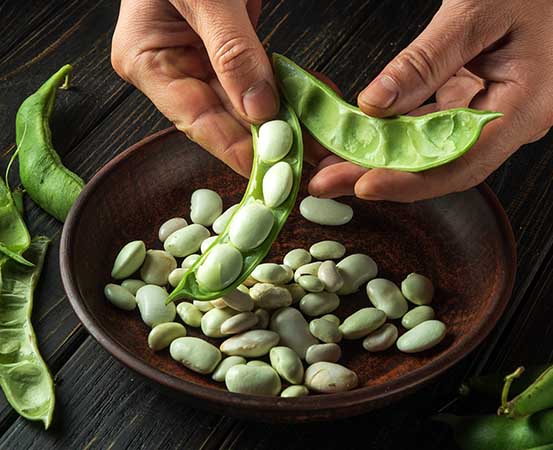
Beans are magical — not just for Jack from the fairy tale but also for every single person diagnosed with type 2 diabetes.
Experts say that the inclusion of beans in the daily diet ensures better diabetes control. Apart from other diabetes-friendly diets that include fruits, vegetables and nuts, nutritionists highly recommend adding beans too since they can also be eaten as a snack, a salad or even with main-course meals without raising the sugar levels.
And there is an entire lineup of beans to choose from: kidney beans, navy beans, white beans, garbanzo beans (chickpeas), lima beans (butter beans), pinto beans, black beans and even legumes such as black peas and green gram.
Are beans good for diabetes?
According to Soumita Biswas, chief nutritionist, Aster RV Hospital, Bengaluru, beans work for people with diabetes because they are low on the glycemic index (GI) and help manage blood sugar levels better than many other starchy foods.
Delhi-based nutritionist Kavita Devgan says beans can be a frequent part of the diet of people with diabetes because they need to eat a high-fibre, high-protein diet — and beans tick all the boxes.
According to her, most people don’t even know that people with diabetes need to follow a low (good) carb diet instead of a no-carb diet. “While they need to choose their carbs carefully, beans are a perfect high-fibre and low-GI carb food,” says Devgan.
She adds that almost all kinds of beans are a good source of magnesium — an important mineral whose deficiency has been found to be quite widespread among people with diabetes.
How a beans-based diet helps control diabetes
According to Bengaluru-based dietitian Ranjani Raman, generally all kinds of beans have a similar nutrient profile — being a great source of calcium, potassium, zinc, iron, folate, magnesium, etc. “And they are also good sources of protein, which can help in better satiety and muscle health,” she says.
Plus, the fibre in beans helps improve gut health, reduce cholesterol levels and manage glucose levels.
Biswas says that while green beans are a good source of vitamin C and antioxidants, dried beans have much more fibre content and low sugar level. Thus, dried beans work better for people with diabetes.
Raman says that fresh and tender green beans could be comparatively easy on digestion, but as beans mature with time their protein content increases and they become more concentrated sources of protein, iron and certain minerals.

Beans: from side to main dish
Dietitians say beans add versatility to a diabetes-friendly diet. They can be added to salads (steamed or sprouted), one-pot meals, be part of a side or the main dish and even be made into bean burgers. “Soaking raw beans in water for eight to 12 hours before using them helps reduce side-effects such as bloating and gas,” says Biswas.
Raman adds that apart from being cooked like gravies, beans can also be mashed and ground with grains to make batters for dosas or pancakes. Roasted beans can be a great snack option and can also be used to prepare hummus and a variety of dips.
Who should go easy on beans?
Some people may have an allergy to beans or members of the legume family. “People suffering from irritable bowel syndrome have restrictions on consuming beans, while overeating beans can cause flatulence and indigestion issues in some people,” says Biswas.
Raman says including beans two to four times a week in the diet should be sufficient for a healthy adult. To prevent any side-effect, she recommends consuming more water than usual if the fibre content is more in the diet.
It is also advised to not have canned beans containing high sodium and preservatives. “Baked beans are high on carbohydrates and contain lots of added sugar,” says Biswas.
People with certain kidney disorders are also advised to refrain from eating beans.
Takeaways
The high-fibre and high-protein content in beans makes it a healthy food option for people with diabetes. It also has a low glycemic index and is rich in antioxidants and minerals that make it a good dietary option to keep your blood glucose level under control.


















15 Responses
Great article covering the benefits of beans.
Thanks for the positive response!
Specially for vegetarians, power packed beans. Very useful content
Very informative article, beans and legumes are an excellent source of protein for vegans.
That’s a great Amazing post to Read
Thanks for the positive reply!
This is very comprehensive and insightful post on diabetes and the benefits of beans in this condition.
Thank you for educating me on what beans type to eat
Thank you for the positive response!
GREAT
Thanks for the positive response!
Can I have detail information about beans and how to use them?
Beans in tin or not
Thanks for the query. Please go through the: “How a beans-based diet helps control diabetes”[Part of the story].
How about those with arthritis? How does beans affect?
Thank you for your query, we at Happiest Health however do not offer medical advice or suggest any doctors’ names.